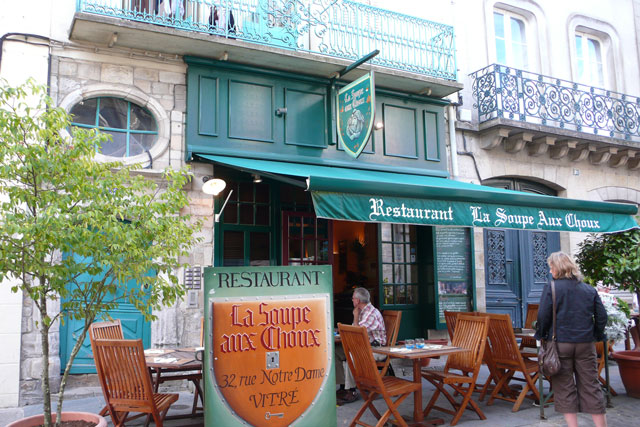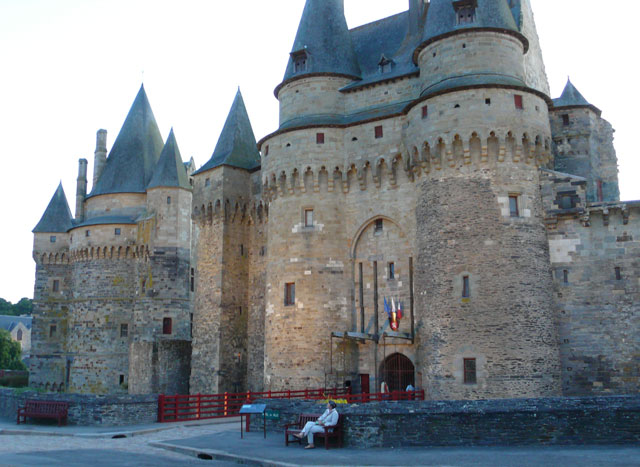We stopped for the night in Vitré, about 40 K east of Rennes, on the way back from Brest on the western tip of Brittany one summer. We discovered a very pretty little town with a mediaeval granite castle, one of the first castles in France to be classified as a monument historique. There are many beautiful granite, slate and half-timbered houses and colourful façades, mainly in Rue de la Baudrairie. I can’t remember the name of the hotel as it was nothing outstanding, but we had a view of the castle from our window. However, we were given a very useful free Michelin guide to “secondary” towns in France that we’ve been exploring ever since.














Monday’s Travel Photos – Vitré http://t.co/lsnkJVhnZp
Very interesting buildings.
So are the baudroyeurs tanners or is it more than that? So far as I can work out they are the step before the corroyeurs, who finish the leather to make it waterproof and other treatments. Are they both connected to the diaspora of Cordoban leatherworkers when Ferdinand and Isabella finally expelled everyone who wasn’t of Spanish origin and Catholic, some of whom went to northern France, or did the Cordobans end up there because there was already an industry, which they just slotted into and introduced new decorative techniques? I’ve no doubt Diderot can enlighten, but I don’t have easy acess to a copy.
My source says “artisan du cuir” but I’ve looked further and it seems they made leather strips or whips.
Aha! So that means they were rawhide specialists! They were not linked in to the tanneries or the curriers, but using unprocessed leather.
Monday’s Travel Photos – Vitré, France http://t.co/LswuuYb5vp via @aussiefrance